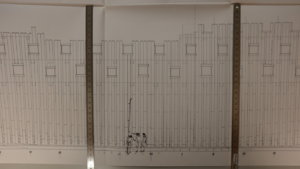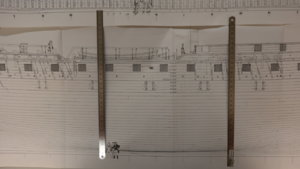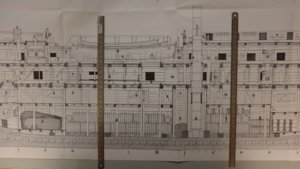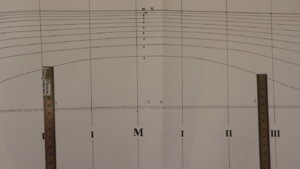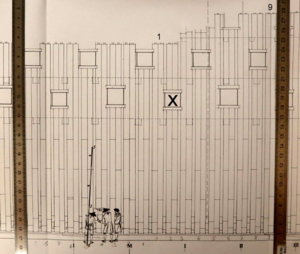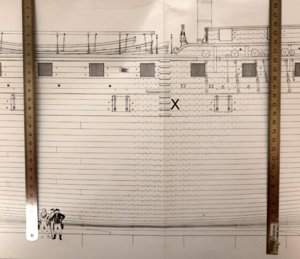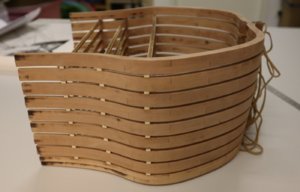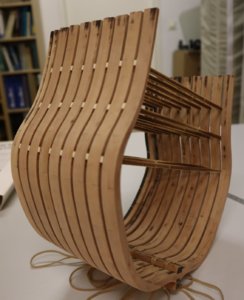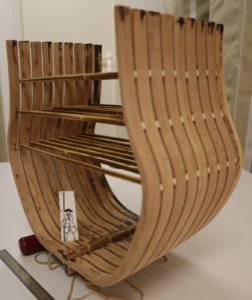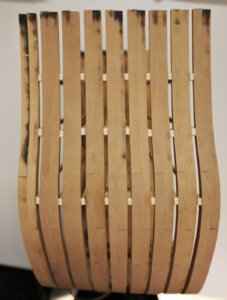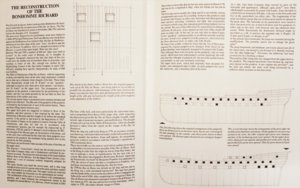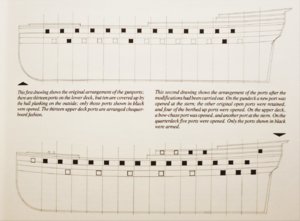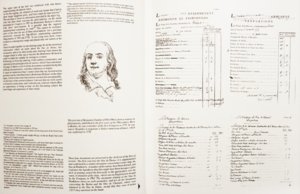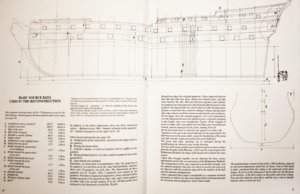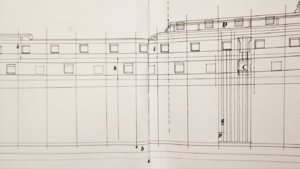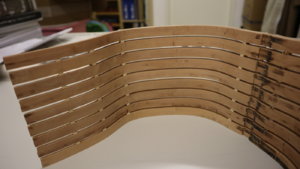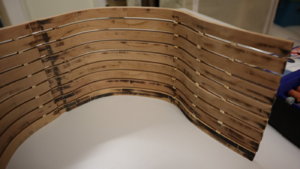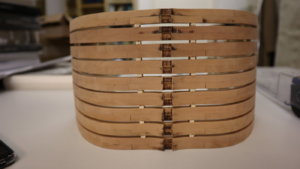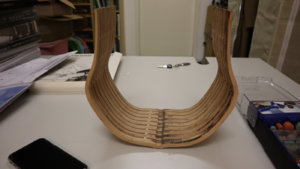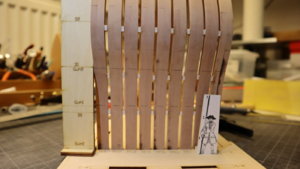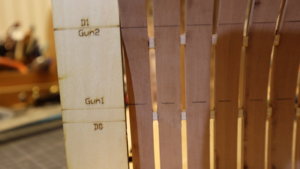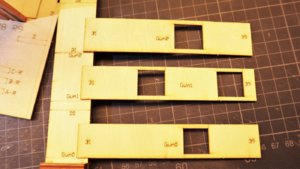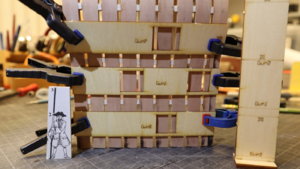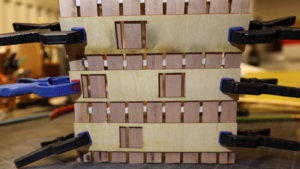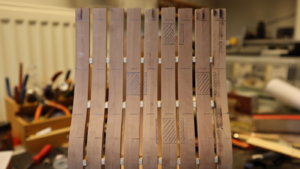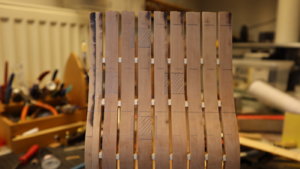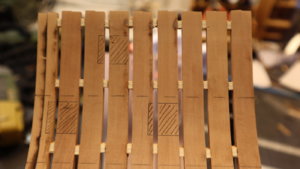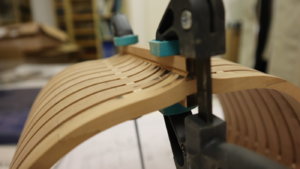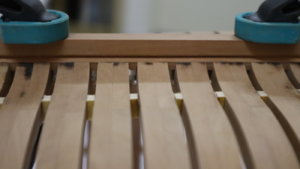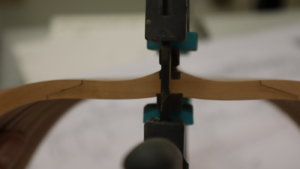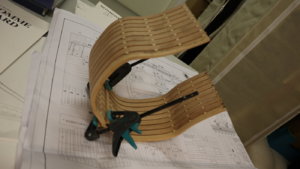I realized, that I did not show the history of the ship USS Bonhomme Richard. With the knowledge of her career, it will be also more clear, why there was this reconstruction and modification of the ship.
from wikipedia:
Bonhomme Richard, formerly
Duc de Duras, was a warship in the
Continental Navy. She was originally an
East Indiaman, a
merchant ship built in France for the
French East India Company in 1765, for service between France and the
Orient. She was placed at the disposal of
John Paul Jones on 4 February 1779, by King
Louis XVI of France as a result of a loan to the United States by French shipping magnate
Jacques-Donatien Le Ray.
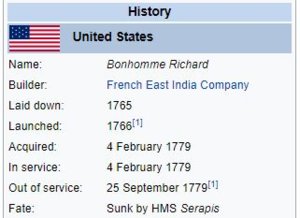
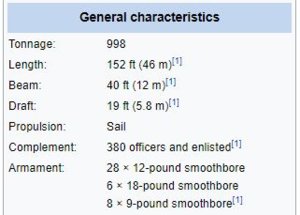 Origin
Bonhomme Richard
Origin
Bonhomme Richard was originally an
East Indiaman named
Duc de Duras, a
merchant ship built at
Lorient according to the plan drawn up by the King's Master Shipwright Antoine Groignard for the
French East India Company in 1765. Her design allowed her to be quickly transformed into a man-of-war in case of necessity to support the navy. She made two voyages to China, the first in 1766 and the second in 1769. At her return the French East India Company had been dissolved, and all its installations and ships transferred to the
French Navy. As a naval ship she made a voyage to
Isle de France (Mauritius) before being sold to private shipowners in 1771. She sailed in private service until she was purchased by King
Louis XVI of France in early 1779 and placed under the command of
John Paul Jones on 4 February. The size and armament of
Duc de Duras made her roughly equivalent to half of a 64-gun ship of the line.
Jones renamed her
Bon Homme Richard (usually rendered in more correct French as
Bonhomme Richard) in honor of
Benjamin Franklin, the American Commissioner at Paris whose
Poor Richard's Almanac was published in France under the title
Les Maximes du Bonhomme Richard.
First patrols
On 19 June 1779,
Bonhomme Richard sailed from
Lorient accompanied by
USS Alliance,
Pallas, Vengeance, and
Cerf with troop transports and merchant vessels under convoy to
Bordeaux and to cruise against the British in the
Bay of Biscay. Forced to return to port for repair, the squadron sailed again 14 August 1779. It went northwest around the west coast of the
British Isles into the North Sea and then down the east coast. The squadron took 16 merchant vessels as prizes.
Battle of Flamborough Head
Further information:
Battle of Flamborough Head
 Bonhomme Richard
Bonhomme Richard on fire
On 23 September 1779, the squadron encountered the Baltic Fleet of 41 sail under convoy of
HMS Serapis and HM
hired armed ship Countess of Scarborough near
Flamborough Head.
Bonhomme Richard and
Serapis entered a bitter engagement at about 6:00 p.m. The battle continued for the next four hours, costing the lives of nearly half of the American and British crews. British victory seemed inevitable, as the more heavily armed
Serapis used its firepower to rake
Bonhomme Richard with devastating effect. The commander of
Serapis finally called on Jones to surrender. He replied, "Sir, I have not yet begun to fight!" Jones eventually managed to lash the ships together, nullifying his opponent's greater maneuverability and allowing him to take advantage of the larger size and considerably more numerous crew of
Bonhomme Richard. An attempt by the Americans to board
Serapis was repulsed, as was an attempt by the British to board
Bonhomme Richard. Finally, after another of Jones's ships joined the fight, the British captain was forced to surrender at about 10:30 p.m.
Bonhomme Richard – shattered, on fire, leaking badly – defied all efforts to save her and sank about 36 hours later at 11:00 a.m. on 25 September 1779. Jones sailed the captured
Serapis to the
Dutch United Provinces for repairs.
Though
Bonhomme Richard sank after the battle, the battle's outcome was one of the factors that convinced the French crown to back the colonies in their fight to become independent of British authority.
Search for the wreck
Bonhomme Richard's final resting location was the subject of much speculation. A number of unsuccessful efforts had been conducted to locate the wreck. The location was presumed to be in approximately 180 feet (55 m) of water off
Flamborough Head,
Yorkshire, a headland near where her final battle took place. The quantity of other
wrecks in the area and a century of
fishing trawler operations had complicated all searches.
One season's attempts to locate and retrieve the ship, or some artifacts from her, using
USNS Grasp were filmed for the
Discovery Channel's
Mighty Ships series in 2011. The
U.S. Navy's mission was unsuccessful. In 2012, an expedition with the Ocean Technology Foundation and the French Navy located a wreck of interest (called "Target 131") in 70 meters of water. The wreck is mostly buried, but some artifacts are visible on the seabed surface, including an anchor that would fit the dimensions and style of the kedge anchor on the
Bonhomme Richard. In 2014, the French Navy and Ocean Technology Foundation mounted an expedition to have the French Navy dive Target 131. Artifacts discovered by the divers included a deadeye block (part of a sailing ship's rigging), large sections of half-buried planking, and what appeared to be an iron spar hoop, with a few pieces of decomposing wood still encircled in it. No evidence of modern objects has been found on the site. The Global Foundation for Ocean Exploration (GFOE) has since continued the work of the Ocean Technology Foundation, leading an expedition with the French and U.S. Navies in 2016, again aboard the USNS
Grasp. More remote sensing was conducted, and researchers discovered additional objects within the wreck site that were deemed worthy of further investigation. A 2019 expedition involving GFOE, the French Navy, and the U.S. Navy was planned, but was postponed indefinitely due to a disagreement among France and the U.S. about the ultimate ownership of the
Bonhomme Richard. The goal of this mission was to prove or disprove Target 131 as being the
Bonhomme Richard.
In 2018 remains, possibly those of the
Bonhomme Richard, were found in shallow water very close to the coast of
Filey, North Yorkshire, England, by the Land and Sea search team Merlin Burrows. However, the location of this wreck does not corroborate with multiple eyewitness accounts from observers on land, who noted that on the morning of September 25, 1779, the
Bonhomme Richard disappeared out of sight over the horizon.
And on
ThreeDecks we can find these information:
DUC de DURAS
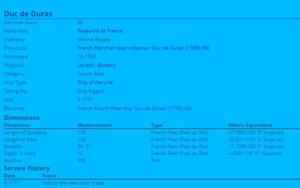
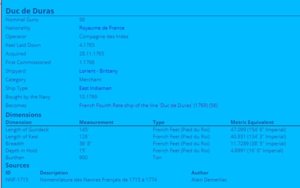
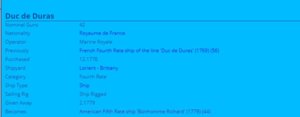
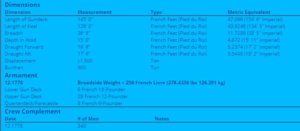 Bon Homme Richard / Bonhomme Richard
Bon Homme Richard / Bonhomme Richard
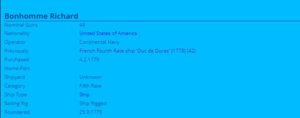
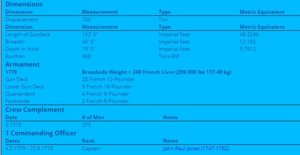
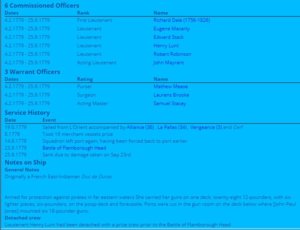

en.wikipedia.org
French Merchant east indiaman 'Le Duc de Duras' (1765). Dates of service, name changes, previous and next incarnations, dimensions, armament, commanders, officers and crewmen, actions, battles, sources
threedecks.org
French Fourth Rate ship of the line 'Le Duc de Duras' (1769). Dates of service, name changes, previous and next incarnations, dimensions, armament, commanders, officers and crewmen, actions, battles, sources
threedecks.org
French Fourth Rate ship 'Le Duc de Duras' (1778). Dates of service, name changes, previous and next incarnations, dimensions, armament, commanders, officers and crewmen, actions, battles, sources
threedecks.org
American Fifth Rate ship 'Bonhomme Richard' (1779). Dates of service, name changes, previous and next incarnations, dimensions, armament, commanders, officers and crewmen, actions, battles, sources
threedecks.org
